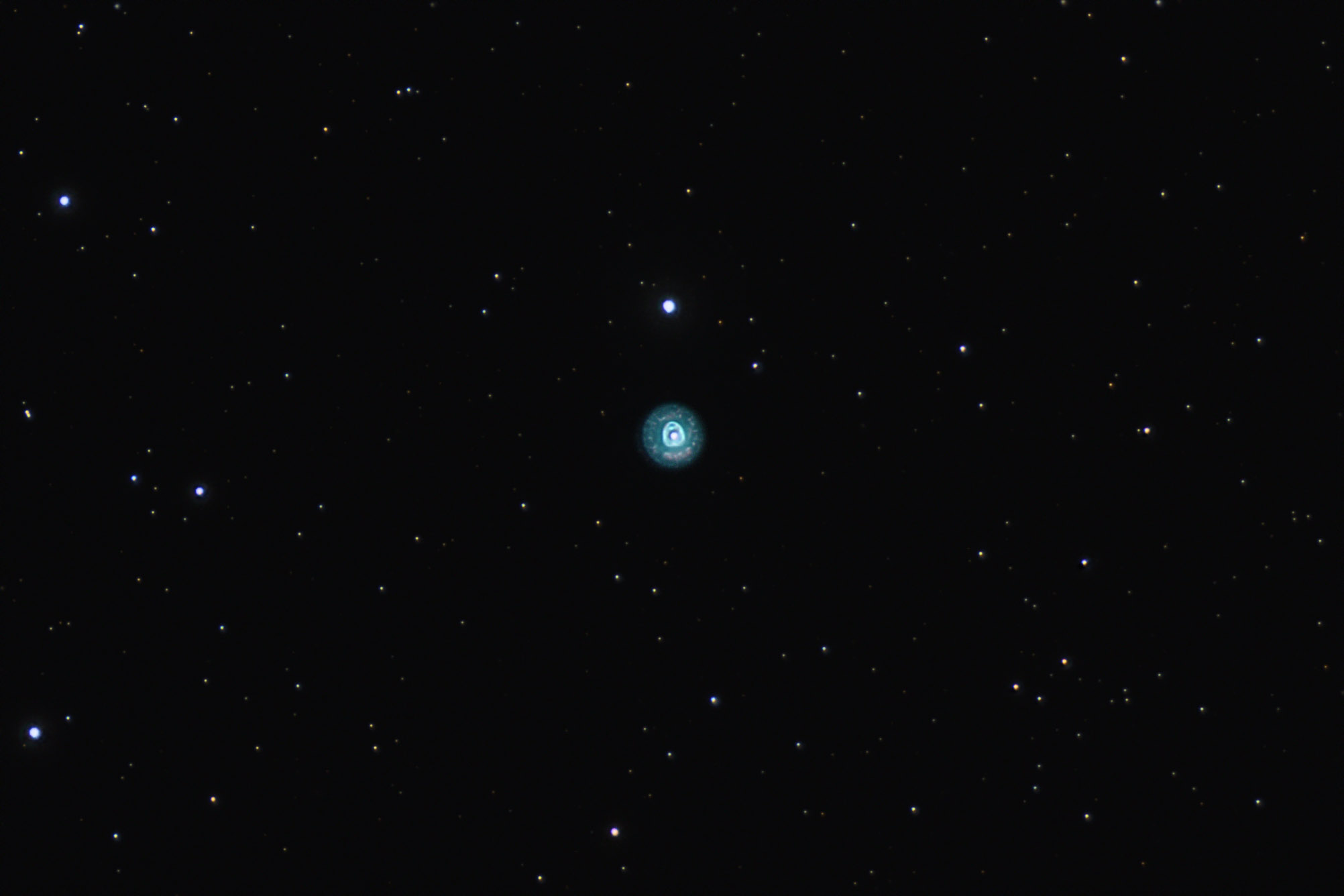| Description | Images |
Object name: NGC2392Designation(s): NGC2392, NGC 2392 is commonly known as "The Eskimo Nebula" as visually it seems to resemble a face buried in a fuzzy parka hood. This image is taken and displayed at 0.5" per pixel rather than my normal 1" per pixel. This image was taken on a night of the best seeing I've had here since building the observatory or since. It was at least twice as good as I normally get. I further improved it using L-R deconvolution. This is the process developed when Hubble turned up with a bad mirror. If all the errors are due to the same thing (a misfigured mirror in Hubble's case) then it is possible to put that out of focus fuzz back where it belonged. It is a long and slow process when done correctly. Normally seeing errors are very random so this process doesn't work well. But when seeing is very good then it can make things even better as it has in this case. It took about 30 minutes doing over 1 billion calculations a second to accomplish this feat. I normally don't have conditions that allow this processing but it worked in this case. Related Designation(s):2MASS J07291076+2054424, 2XMM J072910.8+205444, 2XMMp J072910.7+205443, 87GB 072613.0+210045, 87GB[BWE91] 0726+2100, AKARI J0729111+205441, BD +21 1609, CXO J072910.7+205442, GB6 J0729+2054, HD 059088, HIP 036369, IRAS 07262+2100, IRAS 07262+2100 ID, IRAS F07262+2100, MG2 J072911+2054, NGC 2392, NGC2392, NVSS J072910+205441, PN G197.8+17.3, SSTSL2 J072910.76+205442.3, VERA J0729+2054, [HRT2007] J072910+205435, [WB92] 0726+2100, |
